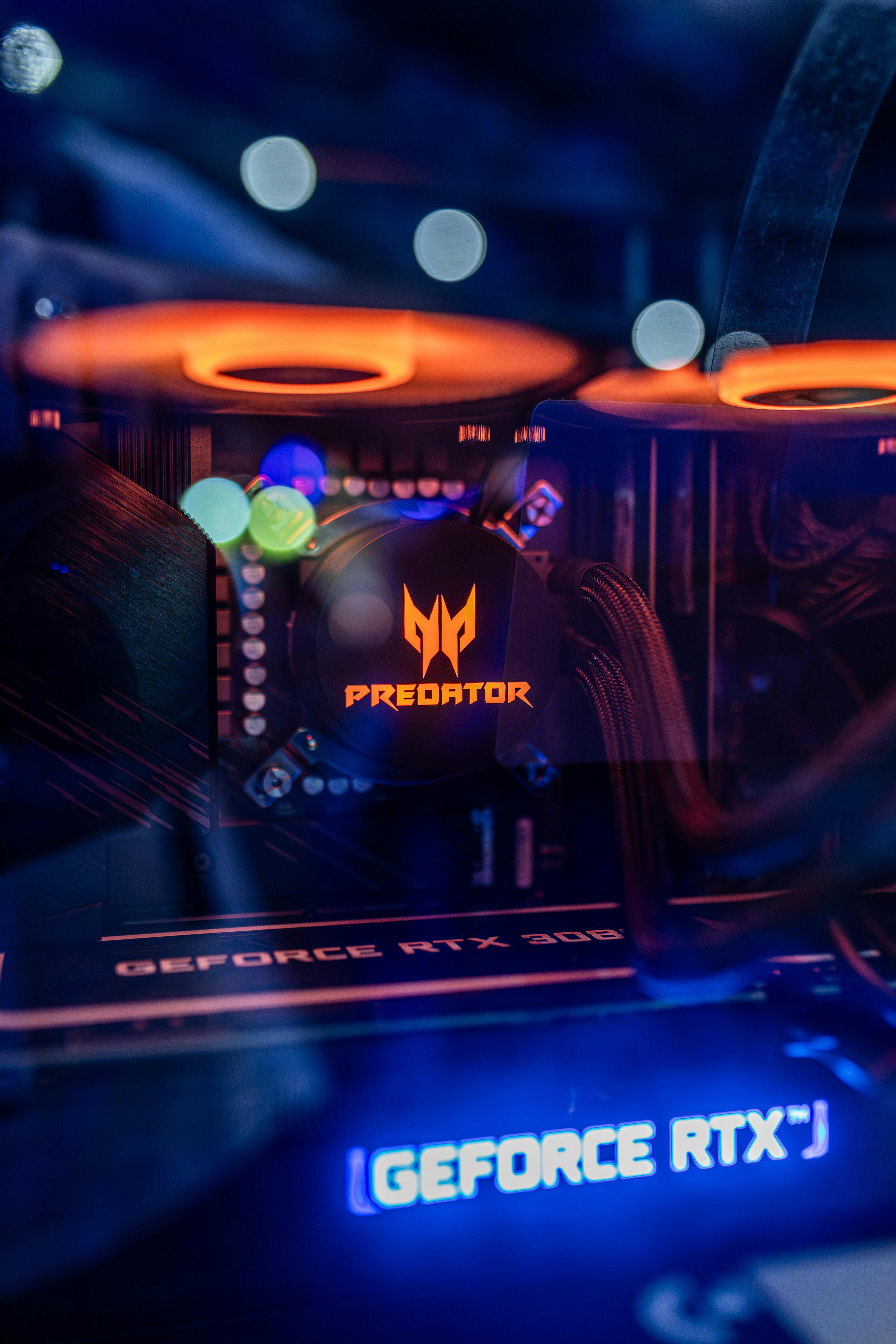Imagine you’re at the gym, trying out the latest fitness technology. You strap on a device that promises to help you reach your goals faster and more efficiently. But have you ever wondered how these devices actually work? In this article, we will explore the differences between open-loop and closed-loop systems in fitness tech. By understanding these concepts, you’ll gain insight into how the technology you rely on for your workouts truly functions. So, let’s uncover the secrets behind open-loop and closed-loop systems in fitness tech together.

Definition of Open-loop Systems
Open-loop systems, also known as feedforward systems, are a type of control system in which the output is not influenced by any feedback or error correction mechanism. In this system, an input command or setpoint is applied to the system, and the output is solely determined by the input and the system’s characteristics. Open-loop systems do not consider the actual output or any external factors, making them less adaptable to changes in the environment or system conditions.
Definition of Closed-loop Systems
On the other hand, closed-loop systems, also known as feedback systems, incorporate a feedback mechanism to continuously monitor and adjust the system’s behavior. In a closed-loop system, the system output is compared to a desired setpoint, and any error between the two is used to modify the system’s input or behavior. This feedback loop allows for real-time adjustments and ensures that the output remains as close as possible to the desired setpoint.

Control Mechanism
Open-loop System Control Mechanism
Open-loop systems rely on a predetermined control mechanism. The control mechanism is designed and programmed in such a way that it will follow a specific set of instructions regardless of any external factors or feedback. This lack of feedback in the control mechanism can make open-loop systems less precise and adaptable compared to closed-loop systems.
Closed-loop System Control Mechanism
In closed-loop systems, the control mechanism involves the use of feedback to continuously monitor and adjust the system’s output. The control mechanism receives information about the actual output and compares it to the desired setpoint. Based on this comparison, adjustments are made to ensure that the system output remains within the desired range. This feedback loop allows for more precise control and enables the system to adapt to changing conditions.
Feedback Loop
Presence of Feedback Loop in Closed-loop Systems
Closed-loop systems are characterized by the presence of a feedback loop. This feedback loop continuously compares the system’s output to the desired setpoint or reference signal. Any deviation or error between the two is fed back into the control mechanism, which then adjusts the system’s input or behavior to reduce the error. This feedback loop enables closed-loop systems to self-correct and maintain a high level of accuracy.
Absence of Feedback Loop in Open-loop Systems
In contrast, open-loop systems lack a feedback loop. The system’s output is predetermined solely based on the input and the system’s characteristics. Any errors or deviations in the output are not detected or corrected in real-time, as there is no mechanism to compare the actual output to the desired setpoint or signal. This absence of a feedback loop can lead to inaccuracies and an inability to adapt to changing conditions.

Real-time Adjustments
Real-time Adjustments in Closed-loop Systems
One of the key advantages of closed-loop systems is their ability to make real-time adjustments based on feedback. The feedback loop continuously monitors the system’s output and compares it to the desired setpoint. If any discrepancies are detected, the control mechanism can quickly and automatically make adjustments to bring the output back into alignment with the setpoint. This real-time adjustment ensures that the system remains accurate and responsive to changes.
Lack of Real-time Adjustments in Open-loop Systems
In open-loop systems, real-time adjustments are not possible as there is no feedback loop to monitor the system’s output. The output is purely determined by the input and the system’s characteristics. This lack of real-time adjustments can lead to potential inaccuracies and an inability to adapt to changes in external factors or system conditions. Open-loop systems are more suitable when the system behavior is well-understood and remains constant.
Accuracy of Output
Accuracy of Output in Closed-loop Systems
Closed-loop systems are known for their high accuracy in producing the desired output. The feedback loop in these systems continuously monitors and compares the system’s output to the desired setpoint or reference signal. Any deviations or errors are quickly detected and corrected through the control mechanism’s real-time adjustments. This continuous feedback and error correction process ensure that the system output remains as close as possible to the desired setpoint, resulting in a high level of accuracy.
Potential Inaccuracy in Output of Open-loop Systems
In contrast, open-loop systems may have a potential for inaccuracy in their output. As open-loop systems do not have a feedback loop, any errors or deviations in the output cannot be detected or corrected in real-time. The output solely depends on the predetermined input and the system’s characteristics, which may not account for variations in external factors or changing system conditions. Therefore, open-loop systems may be less accurate compared to closed-loop systems and are more prone to discrepancies between the desired and actual output.
Reliance on Input Data
Reliance on Input Data in Closed-loop Systems
Closed-loop systems heavily rely on input data for their operation. The control mechanism in these systems continuously monitors the system’s output and compares it to the desired setpoint or reference signal. This comparison relies on accurate and reliable input data to determine any deviations or errors. Therefore, closed-loop systems require precise and consistent input data to ensure accurate control and error correction.
Limited Reliance on Input Data in Open-loop Systems
In contrast to closed-loop systems, open-loop systems have limited reliance on input data. The output of the system is primarily determined by the predetermined input and the system’s characteristics. Open-loop systems do not continuously monitor the system’s output or compare it to a desired setpoint. As a result, the accuracy and precision of the input data are not as critical in open-loop systems. However, it is still important to provide appropriate input values to achieve the desired output.
Processing Time
Processing Time in Closed-loop Systems
Closed-loop systems may require a certain amount of processing time to continuously monitor the system’s output, compare it to the desired setpoint, and make any necessary adjustments. The processing time may vary depending on the complexity of the system, the speed of the control mechanism, and the frequency of feedback updates. However, the processing time in closed-loop systems is typically within acceptable limits, allowing for real-time adjustments and accurate control.
Short Processing Time in Open-loop Systems
In open-loop systems, the processing time is generally shorter compared to closed-loop systems. Since open-loop systems do not involve a feedback loop, the processing time primarily depends on the system’s characteristics and the time it takes to execute the predetermined instructions. Open-loop systems can operate at faster speeds as they do not require real-time adjustments based on feedback. This shorter processing time can be advantageous in situations where real-time control is not necessary or when high-speed operations are required.
Adaptability
Adaptability in Closed-loop Systems
Closed-loop systems are highly adaptable to changes in external factors or system conditions. The presence of a feedback loop allows the system to continuously monitor the output and incorporate real-time adjustments. This adaptability enables closed-loop systems to maintain accuracy and optimal performance, even in the presence of variations or disturbances. The control mechanism in closed-loop systems can quickly respond to changes and ensure that the output remains within the desired range.
Limited Adaptability in Open-loop Systems
In contrast, open-loop systems have limited adaptability. As they do not incorporate a feedback loop, open-loop systems cannot make real-time adjustments based on changes in the output or external factors. The output is solely determined by the preset input and the system’s characteristics, which may not account for variations or unexpected conditions. Open-loop systems are more suitable for situations where the system behavior remains constant and predictable.
Examples of Closed-loop Systems
There are numerous examples of closed-loop systems in various industries and applications. One common example is the thermostat in heating and cooling systems. The thermostat continuously monitors the temperature and compares it to the desired setpoint. If the temperature deviates from the setpoint, the thermostat triggers the heating or cooling system to adjust the temperature accordingly. This feedback loop allows for precise control and ensures that the temperature remains within the desired range.
Another example is the cruise control system in automobiles. The cruise control system maintains a set speed by continuously monitoring the actual speed of the vehicle and comparing it to the desired setpoint. If the actual speed deviates from the setpoint, the system adjusts the vehicle’s throttle to bring the speed back to the desired level. This closed-loop system provides convenience and ensures that the vehicle maintains a constant speed while driving.
In the field of fitness technology, closed-loop systems are commonly used in wearable devices such as fitness trackers and smartwatches. These devices continuously monitor the user’s heart rate, steps taken, calories burned, and other metrics. The feedback loop in these devices compares the actual measurements to the desired targets or goals, allowing users to track their progress and make real-time adjustments to their fitness routines. These closed-loop systems provide accurate and personalized data to help users achieve their fitness goals.
In conclusion, open-loop and closed-loop systems differ in their control mechanisms, feedback loops, real-time adjustments, accuracy of output, reliance on input data, processing time, and adaptability. Closed-loop systems utilize feedback to continuously monitor and adjust the system’s output, resulting in accurate and adaptive control. On the other hand, open-loop systems lack feedback and rely solely on preset instructions, making them less precise and adaptable. Understanding the differences between these systems is crucial for designing and implementing effective control strategies in various industries and applications.
